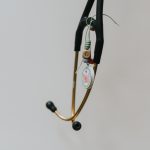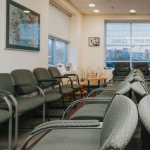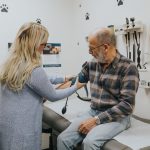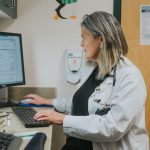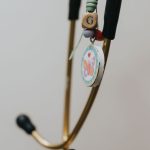Consultation on this standard is now closed. Please email consultation@cpsa.ab.ca if you have any questions.
Feedback we received
Under Standard 6, it is written that a provider must not charge for after hours care with the inference that all care provided after hours is covered under the AHCIP. That is not necessarily true. Some care provided after hours is uninsured under the AHCIP and it should still be perfectly reasonable to charge patients for that care, regardless as to the time of day in which it is provided. A revision of this standard is necessary. It should read something like "A regulated member must not charge patients an additional fee specifically for accessing services covered under the AHCIP."
Regarding Section 6, it is also important to note that the AHCIP insurance plan already pays differential fees and provides surcharges for services provided after hours and this section should have specific wording to recognize that it is acceptable to bill those fees and surcharges.
Finally, it is also important to recognize that there may be MDs who practice in other jurisdictions who also hold Alberta licenses. In the jurisdictions in which they practice, they may be able to bill different fees for their services, depending on the time of day and all of that care would be outside of the AHCIP. In that case, I would not consider that practice a violation of ethics although under this code, it would be as written.
I have two questions regarding the proposed continuity of care standard addition "7. A regulated member must not order a diagnostic test or make a referral request in another healthcare provider’s name."
In terms of ordering anatomic pathology diagnostic testing the terminology on our requisitions and clinical and lab information systems has varied over the years and has included in the primary requesting line "ordering physician, physician to act on results, requesting clinician to act on results and currently with the provincial connect care system being implemented authorizing provider" . With anatomic pathology it is not rare that the physician actually ordering/requesting the test is not the one physically obtaining the specimen/filling out the requisition and the physician responsible for acting on the results may be different from both of the physicians above. Because the clinical and lab information systems and corresponding requisitions do not allow for this clear distinction of physician roles, which from a continuity care point of view would be optimum, and we do not have the ability to change this (i.e the authorizing provider terminology built into connect care was designed from a U.S.A. perspective where insurance companies are trying to decide if they need to reimburse charges for diagnostic testing and will only cover testing authorized by a health care provider that is part of that insurance providers group) we are left with a situation that has risk of patient harm related to continuity of care problems. If for example according to the proposed CPSA standard the physician obtaining the biopsy and that is filling out the requisition has to list themselves as the "authorizing provider" even though they are not the ones that really requested the test and will not be following up on the results with the patient and may not even be in the country or contactable when potential critical results of that test arise, then a very real risk of patient harm may arise. This is the very scenario that in the past has lead to patient harm and which initially resulted in a change of our requisitions to have mandatory fields of "physician to act on results and tissue removed by" (i.e the tissue removed by person is responsible for the requisition and that would be contacted next if the physician listed as the one to act on results was contacted and stated they were not the correct person). However, with the new provincial information system only the authorizing provider is a mandatory field (there is no separate physician to act on result field) and if the physician who is doing the biopsy and filling out the requisition is not allowed to place the physician who is going to act on results in that field then we will run into scenarios like before where we cannot guarantee critical results will be able to given in a timely manner to the real person looking after the patient. So for my first question is how can a physician adhering to this proposed CPSA standard and restricted by forced mandatory fields and terminology on diagnostic anatomic pathology requisitions, which they cannot change, not create a scenario as listed above that can result in patient harm as has occurred in the past?
The second question is in regards to how the proposed standard is felt to work in the situation of "reflex diagnostic testing". For some tumors current protocols require reflex testing be done for two purposes 1)Screening for hereditary cancer syndromes (like Lynch Syndrome) 2)Expediting predictive and prognostic results which may affect patient treatment (i.e in some scenarios oncologists need the test results to determine the appropriate systemic/chemotherapy and as opposed to waiting to see the patient at first referral and then order the test themselves they want the sign out pathologists to reflexively order the tests upfront to save 1-2 weeks in delay to patient treatment (as some of the tests themselves take up to 3 weeks to perform and often chemotherapy by protocols should optimally be started within 4 weeks of diagnosis). The physician/pathologist ordering the reflex testing at time of diagnosis in these scenarios is not the physician who will be acting on results, never has contact with the patient and often does not know who the physician is that the patient will be referred to for treatment or who is going to followup on the results. Occasionally the physician ordering such reflex testing does know who the oncologist is that wants the test results and will be acting on them. In such a scenario given the restrictions of the lab information system and requisitions noted above it makes far more sense from a continuity of care scenario to list the oncologist as the authorizing provider to ensure they get the test results and are contacted first for critical results as opposed to the pathologist to be forced to put their own name as the authorizing provider when again they will never have contact with the patient or know how to best contact/locate the patient, will not be looking for the results as they do not change anything the pathologist would do with that patient's care/case and may not be around or even in the country when the test results from that reflex genetic or molecular testing is completed. So the second question is how does the CPSA feel the proposed standard should work in regards to reflex testing protocols that currently exist for the screening of hereditary cancer syndromes and predictive biomarker testing for oncology treatment purposes of some tumors?
It might make sense to start the preamble with "All regulated members have a professional and ethical obligation to ensure continuity of care...", followed by the sentence describing various primary care permutations, locums, and specialists?
I'm curious what's meant by "service" (i.e. "an appropriate healthcare provider(s) and/or service"), and whether that should perhaps be added to the glossary? Would a telephone answering service be included? Does this mean a hospital-based specialist "service"? Particularly with the advent of fly-by-night tele-medicine, it might be prudent to head off problems by clarifying that handing over continuity of care to a 24-hour Babylon-type service isn't acceptable?
Although 1.b is a wonderful concept - "have a system in place to identify and track when an investigation ordered has not been completed by the patient or a referral request has not been responded to by a consultant in a timely manner" - I've yet to see it in action in the real world. If the CPSA is truly wanting to both promote and enforce this part of the Standard, practical workflows (i.e. computerized, and/or "won't bog the system down to the point of collapse") must be available to members. Once the CPSA starts looking into this more, I think you'll realize it's much easier said than done.
I'm unclear whether 2.a ("must document who's taking over care") is truly a subset of 2 ("CC'ing another doc doesn't remove one's responsibility for follow-up"), or if these are two separate requirements? Does 2.a only apply for patients where information is CC'd, or any patient where doc A gets doc B to accept follow-up responsibilities? Also on that point, it's probably more common that "another healthcare provider" accepts responsibility for the follow-up of a day-sheet, or panel, or other grouping of patients, than to accept care for individual patients. This makes the requirement that documentation be made in each patient's chart quite problematic, and sometimes impossible?
Current advice to short-term locums working in non-AHS settings where lab/DI are live on Connect Care, is for the locum to order tests under the name/Connect Care IDs of a local clinic doc, to allow appropriate routing of results (and we're told there is no other way to ensure such results are routed to the appropriate clinic EMR). Apparently, this has been vetted by the CPSA as well as CMPA, but it's in direct opposition to point 7 of the draft SoP. It's likely that residents/fellows would also frequently run into problems with how #7 is worded. Again, the spirit makes sense, but the practical application is going to cause a few hiccups.
Regarding Section 1b, does the College seriously expect a doctor to be available 24/7 to address any possible patient concern that could arise ?
Does the CPSA therefore expect primary care clinics to be open 24 /7 and for doctors to never have any time away from work because they have treated a patient at some point ?
We have services such as 811 and hospitals that already provide 24/7 triage and appropriate care. Patients are freely able to access virtual care providers such as Babylon or see other doctors without permission from their regular doctors. Why should a doctor be expected to enter into a formal agreement with Hospitals and 811 when these services are freely available to all Albertans ?
The presence of Netcare allows doctors to obtain a significant amount of information about most patients they are likely to encounter. Is it realistic or even necessary to expect their primary doctor to be available 24/7 to provide information from medical records ?
Surely there has to be a place in the standard for common sense ? If a patient falls at 2 am on a Sunday morning, does the CPSA seriously expect the patient to be able to phone any doctor that they have ever seen (Gp or specialist) to ask whether they need to go to hospital for an Xray to exclude a broken leg ?
With respect to section 2, patients are often looked after buy multiple doctors who may order tests. Some specialist tests and their interpretations are beyond the scope of General Practitioners. Surely the responsibility for following up tests should lie with the ordering physician unless another doctor has accepted this responsibility formally.
Again common sense needs to apply. The radiologist who does a Biopsy on request from a GP should not be expected to follow up the result and manage the patient even though their name will be on the requisition as the ordering physician.
The standard does not clearly define what constitutes a physician patient relationship (i.e. one visit per year or once every three months?) as their is no end to expectations and entitlement.
What happens if a patient has seen multiple doctors at your clinic because you were unavailable at times in the past ? Technically, according to the proposed standard the patient could expect that every doctor that they have seen should be available 24/7 to them.
While I can accept that a doctor managing an acute problem should hand over to colleagues during a period of absence if possible (but if not possible, the patient should also assume some responsibility for seeking care if the need arises).
However, it is unreasonable to expect a doctor to "place" every patient with another physician prior to their absence incase a healthcare need arises. It is also unrealistic to expect a doctor to document in every patient chart that they will be away for "x days" and Dr Y is available to cover or that tonight doctor P is in ER and will deal with urgent results.
The standard does not define what constitutes an extended absence ? If I go overseas on holiday for a month can I just leave my patients "in the lurch", but for six weeks I need to find cover ?
It seems unreasonable to place the sole burden for patients healthcare needs exclusively on a doctor. The reality is that most patients manage to find an alternative healthcare provider when their doctor is unavailable.
I believe the changes would help to maintain safe continue care of the patients without risks.
Physicians in ER, should limit there investigations to helping a patient ,and reaching a diagnoses as soon as possible. Any further expansion on future investigations , should be left for the family physician to order and follow up on. Ordering investigations in ER remain the responsibility of the ER physician. The outcome of diagnostic tests and further treatment changes based on those results will remain the responsibility of the ordering doctor, unless in direct consultation with family physcian
Although I agree with the spirit of the guideline, it is unrealistic in its expectations for rural and remote practice. Unless the goal is to prevent anyone from working in a rural setting, it must be adapted to the circumstances that exist out of major urban centres where there is sufficient staff and resources to make the guideline possible.
For example, what will a solo practitioner do with number 3 if they experience a sudden illness and are incapable of fulfilling the requirements? Will they be disciplined as they will not have met the expectation. What is they wish to retire and no one wishes to take on the responsibility for the likely extended period required to recruit a new physician (and this policy may make it even harder to recruit).
Further number 2 sets an onerous task on a solo practitioner to work everyday to check and review records. That is a recipe for burnout.
Lastly, where is patient responsibility in the guidelines. Why are they not expected to follow up with the physician as it is their health concern for which they came to the physician. Why is the physician the only one held to account. The guidelines are paternalistic and not empowering of the patient in the patient/physician relationship.

